|
The most important factor in determining where to place your new hive is where is the most sun! I understand it's a nice sentiment to want to give your beehive a lot of shade for the hot summer, but that is a hive beetle problem waiting to happen. Hive beetles love shady areas and hate full sun! So, put your new beehive in full sun. If you have to place them in some shade, an afternoon shade in the west is best. You want the bees up and out of the hive first thing, so their entrance/exit needs to be at the spot that sees sun first.
A colony will keep their hive cool in the summer. They spit water on the front porch and fan it inside the hive. The bees also hang outside of the hive to keep the inside temperature from getting too hot. This is called bearding. Why? Because it looks like a gentleman's beard. Hay bales can block the cold wind in the winter, or you can place them in front of a line of trees...as long as those trees aren't shading the bees throughout the day. OK, now what to put your beehives on! I use cinder blocks for the most part. I place 2 flat and then I place 2 on top of the flat ones. You can build a stand or buy a stand as well. It's really about how fancy you want to get. An example is chicken coops. I've seen some really basic coops and I've seen some coops that look like a human could live in them. They both have chickens that produce eggs - I'm sure! haha! Just a reminder, bees fly anywhere from 2-4 miles a day to find food and water. This means, while providing them a watering source is very nice of you, it may be unnecessary. I have a creek on my property and they visit it for their water. Bees love dirty water and clean water. The dirty water has minerals they require. Again, it's all in how you want to keep your bees. If you want to provide a watering source, use a bird bath with some sticks or pebbles in it. Bees cannot swim, so they need places to land on where they can stick their little tongues out and slurp. Have fun with your new apiary!! These are the top 2 questions I get asked at least 5 times a week. I'm going to answer both of these on this blog and then refer to this blog going forward. That way, by the time we talk, you will already have an answer to these questions.
How do you start beekeeping First, you'll need to check your city ordinance on the legalities of keeping bees. Most cities around Kansas City allow you to have 2 beehives in your backyard, but you'll need to check on this. Some cities have specific locations that the bees need to be placed. Meaning, they can't be within so many feet of your neighbor, etc.. Again, check with your city. Once you find it's legal, you'll need to scout a new spot for them. Full sun is best! If there is shade, afternoon shade in the west is best. You do NOT need a bunch of land to have bees. Urban beekeeping is a thing! Now, you need to learn about how to keep bees. There are 3 types of classes that I teach. One is the "inside the hive class". This class is an hour in a beehive with yours truly. I charge $75 a person for this class. If you are in a group, you can contact me for a group price. Typically I will have these classes in May/June, but with COVID-19, I'm not planning any right now. The next class is "Beginner Beekeeping". This class is an all day class that is taught by a couple different beekeeper inside a "classroom". The typical time frame for this class is Jan/Feb/March. The last class I offer is an "introduction to beekeeping" class. I offer about 10 of those a year and in several different locations. They run from late fall to very early Spring! This class is a sneak peak into beekeeping. You can also do some research online and join a beekeepers club. There are clubs all over Kansas and Missouri. I'm the President of Cass County Bee Club that meets in Harrisonville, Missouri. "Beekeeping for Dummies" is a great book! YouTube has a ton of videos about beekeeping! How much does it cost to start beekeeping You can anticipate spending around $850.00 to start beekeeping. This includes a book, your equipment, tools, suit, a class and most importantly your BEES! It is not a cheap hobby, but it is a rewarding hobby. I sell kits in an attempt to make it more affordable, meaning one price gets you everything. I also offer payment plans to help. My Master Hive Kits are sold out right now, but if you are wanting to start beekeeping next Spring, look for them on my website in late fall of this year. Honestly, the best time to purchase for the Spring is the previous fall. If it weren't for COVID-19, I'd be sold out of everything right now. I have a few options left for this year. Please read my blog titled "There's still time to start a beehive this year" for all the information on what is left to purchase. I'm going to tell you that I've been selling bees for 4 years now. I know that's not a super long time compared to others out there, but it's long enough to know that when something seems too good to be true, it usually is. I've seen some really cheap prices for bees. I can also go to amazon right now and probably buy a cheaper kit from China. A few wooden boxes that have been fumigated to pass through customs. Bottom line, you get what you pay for. Your new bees deserve better. Anyway, I'm not a pushy saleswoman. I respect the bees too much for that. Beekeeping is something you need to have a passion for. I'm just someone who loves the bees and wants to see new beekeepers succeed. After you've read this whole blog post, are you still feeling the buzz?? Call me, let's talk. 816-739-0726. Christine First of all I want to say that swarming is NOT a bad thing! It means that your hive is healthy and growing! Now that I've made that clear, I'll tell you why bees swarm.
The first reason is because it's in their nature. Think about bees living in the wild. How do they replenish the earth with more bees? They create a split from their hive and make a new hive with that split. That is a swarm. So, when you hear beekeepers say they are making splits, what they are doing is trying to prevent their hive from swarming and in doing so getting an additional hive to add to their addiction, I mean hobby! ;) When your hive makes it through winter and Spring is gearing up, the bees nature is to replenish the earth. So, they split because it's Spring. The other reason they swarm is when they run out of room. If you get home with a NUC of bees and you leave it in the NUC box, the bees will swarm. Probably even a few times throughout the summer. Bees need room to grow. Remember a queen can lay anywhere from 1,000-2,000 eggs a day during the peak bee season. That's a lot of bees being born. Keep in mind that swarming is not the same thing as absconding. When a hive absconds it means every single bee just up and leaves the hive. That is due to an issue in the hive, most typically mites. But, it can also be a hive beetle infestation or a critter messing with it. Now that I've shared the reasons they swarm, I'll tell you what happens inside the hive before and after it swarms. The bees have a meeting and decide they are going to swarm. I'm joking, but you get my point. A laying queen is too heavy to fly long distances, so the workers will stop feeding her so she will stop laying eggs. The workers make 10-20 replacement queens (swarm cells), from the eggs she lays before she is put on her swarm diet. Once those swarm cells are capped, the old queen and 1/2 the hive take off to a new home. They know exactly where they are going before they leave, because scout bees have been looking for a new place to create a new hive. So, why do they hang on trees? They're resting on their journey to their new home. What's left behind after the swarm is 10-20 virgin queens who are going to basically either fight to the death, or the first one born will go and sting all of the others to death inside their cells. Sometimes a virgin will swarm with the original queen and there's a fight once they find a new home. Sometimes there are a couple of swarms, one with the original queen, and another one with a virgin. Those are cast off swarms. The virgin queen that is victorious and basically a bad ass, goes on her mating flight and hooks up with several drones. (don't judge). She flies home and is now the queen of the other 1/2 of the bees that were left behind. The next Spring this process will be repeated more than likely. In closing, I'm not saying that every single hive that overwinters will swarm. I'm saying it is highly likely they will. Set your swarm traps folks! Remember, a swarm in May is worth a load of hay...a swarm in June is worth a silver spoon...but a swarm in July is not worth a fly! There are a lot of questions coming in about whether it's too late to start beekeeping this year. The answer is NO! Also, people are asking what they need to start. Here is a breakdown of what I sell and what you'll need in addition to each option below. Call me with any questions, but please read this first. It may have all the answers you seek.
Let's talk about all the options left for beekeeping THIS year! First, we have a Single Box Hive for sale. This is your start to an amazing beekeeping year! The Single Box Hive you purchase from me includes a full hive of bees inside a deep box. The single also comes with a telescoping lid, inner cover, solid bottom board, feeder and an entrance reducer! You will need a second deep box with frames/foundation, one super with frames and foundation...if you're lucky two supers! You will also need protection, which can be a jacket, suit or veil. You'll need a hive tool, smoker and gloves. Those are your basic necessities for this year. At this time I am sold out of individualized equipment, tools and protection, with the exception of veils. Veils are $35.00! Next we have our 5 Frame NUCS! Our NUCS are looking really good!! You will need a deep box with 3 empty frames/foundation to put your 5 frame NUC into so the BEES can grow! A feeder will take up the space of 2 frames! You'll also need a second deep box with 10 frames/foundation, and probably just one super with 9 frames and foundation. (I run 9 frame supers.) You will also need protection, which can be a jacket, suit or veil. You'll need a hive tool, smoker, gloves, telescoping lid, solid bottom board, entrance reducer and a feeder! At this time I am sold out of individualized equipment, tools and protection, with the exception of veils. Veils are $35.00! The Pickup Date/Time for these 2 options is May 30th! How to order - You can pay online for everything! It's super easy. After you've ordered, you'll get an order number. Hold on to that. The world isn't the same this year as it was last year. Last year I had an open window of time for people to come get their nucs or hives. Sat/Sun anytime between 7-11. I offered flexibility and was able to shake your hand, give some of you a hug and visit with you. The master hive kit classes were scheduled by you. I gave you several options and let you choose.
This year we can't do that. We live in a world right now where there's a limit of 1 person per family allowed inside Wal-Mart. There are arrows in the grocery stores guiding you on which way to walk so you're not too close to a stranger. Spots to stand at when you checkout. Most people are wearing masks and gloves. This is the predicament we are in right now. We also are not allowed to congregate in groups of 10 or more! Additional students, for $25.00 a person, was offered from the very beginning of sales. Unfortunately, this is no longer an option. Your date/time is listed on the website under the "Pickups" tab. Everything you need to know about pickups is on this tab. And, everyone has been emailed and told to refer to the Pickups tab. If you want to talk to me about how excited you are about your bees, or placing them at your house, or if you have any questions about bees in general, I'd LOVE to hear from you. But, if you are wanting to argue about pickups, I'm not participating any further in these kinds of conversations. I'd love it if things were different and we could be more flexible. I personally enjoy talking with all of you at pickups. But, it is what it is, and we just have to make the best of the situation we are all in right now. See you soon! Sometimes, queens die. It could be old age, it could be she got injured during an inspection. It's hard to say what happened to her. If a queen is failing, meaning she isn't laying the amount of eggs the colony would like to see, the hive will make a unified decision to replace her. They use one or a few of her eggs she's laid to create a supercedure or emergency queen cell. As long as there are some viable eggs, that is. But, sometimes she doesn't lay eggs and then dies and the hive is queenless with no replacement potential. You have 2 options. You can buy a mated queen, but those are kind of pricey with shipping. Or, you can steal a frame of eggs from another hive and they'll make a queen from that frame. I'm telling you this because I wanted to explain what I did back on 03/07. I stole a frame of eggs and gave it to a queenless hive with no eggs. I couldn't tell at that time that it was mostly drone eggs. I know now because it was a bunch of drone capped brood when I checked on it on 03/25. Drone brood is puffier, almost like kix cereal. They can't make a queen out of an unfertilized egg, which is what drones are. So, I gave it another frame on 03/25 and on 04/01 I found 2 queen cells! Yay! Now, my next check will be on 04/15 to see if there are eggs. If I see eggs on 04/15 that means the virgin queen was born, took her mating flight and made it back successfully mated and is now laying eggs!! I will NOT open the box until then because I could disrupt that whole process by disturbing the hive. Look below at the drone brood and how it sticks up higher than the worker brood. That's how you tell if males or females (workers) are going to be born.
|
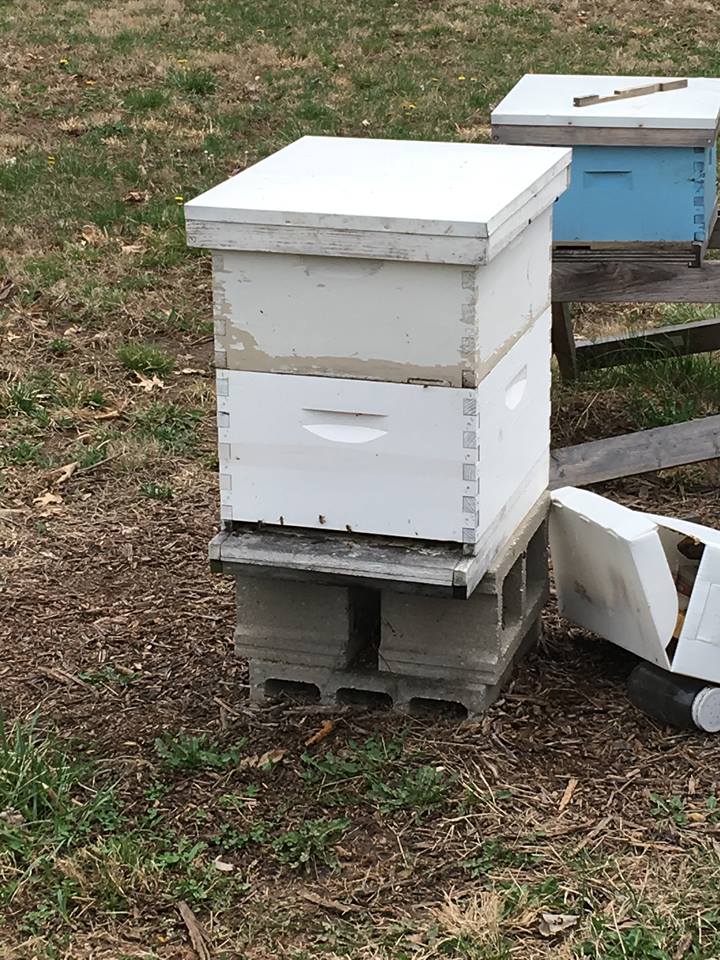
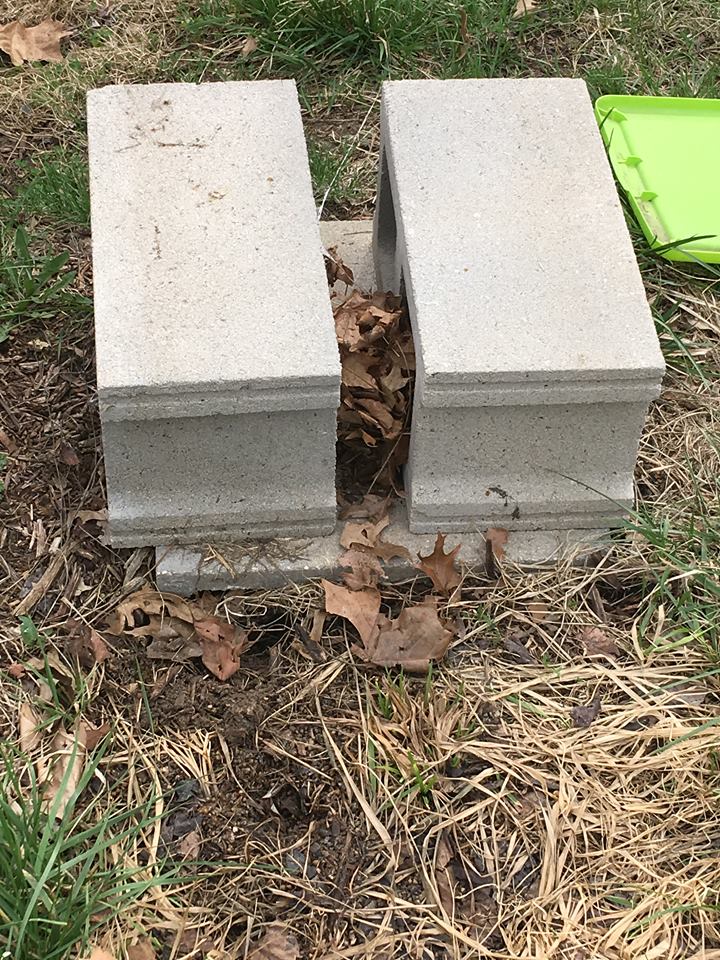
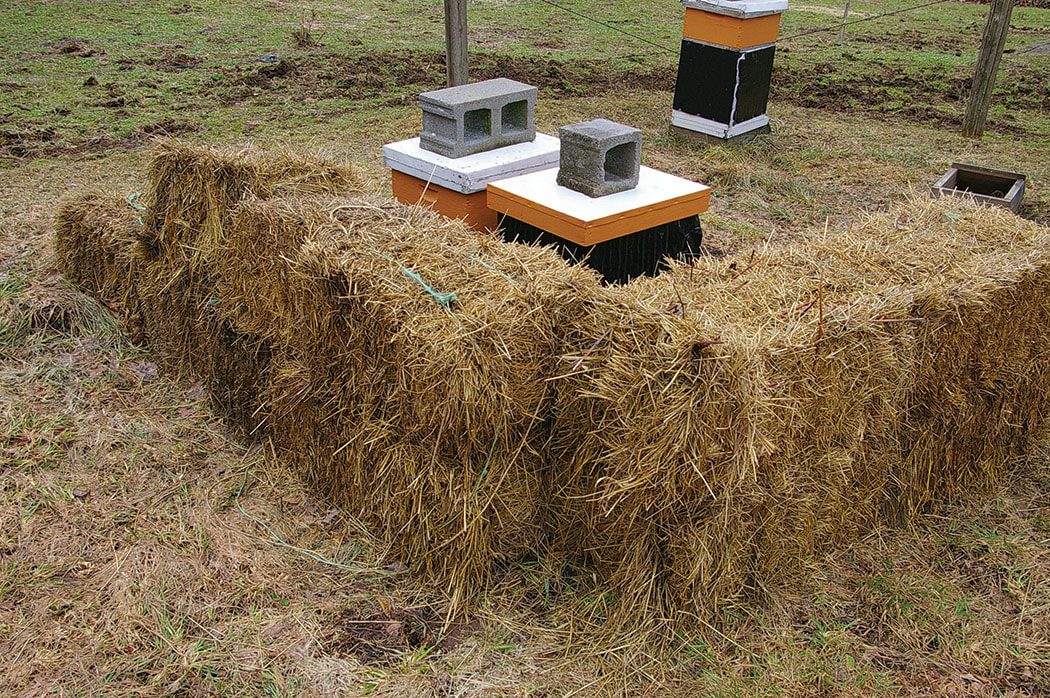
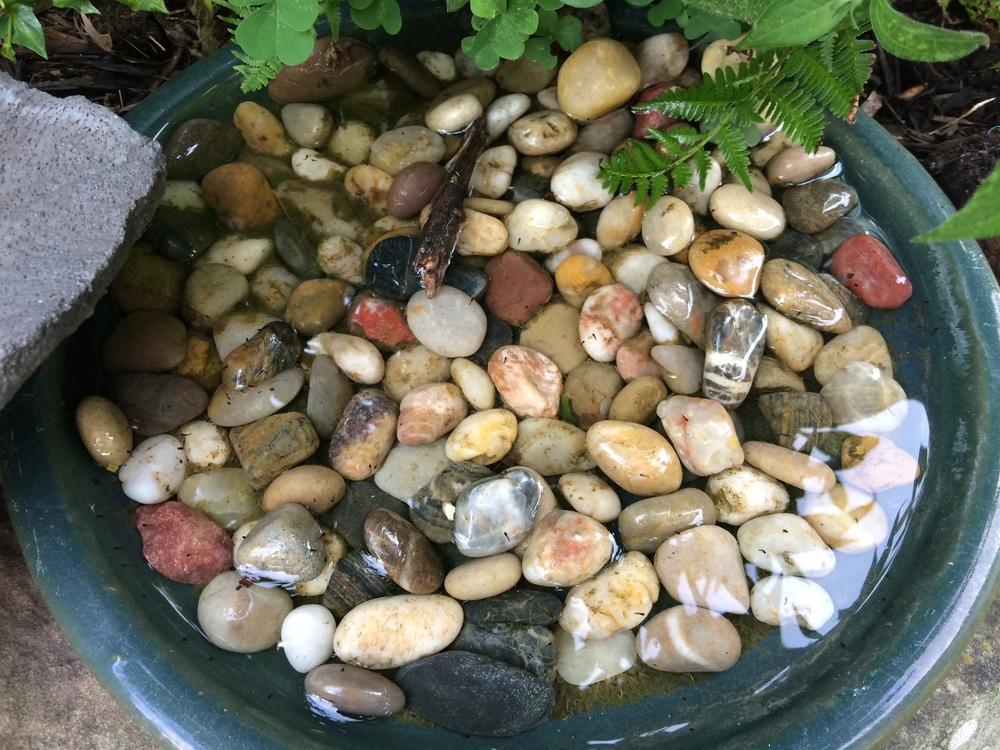
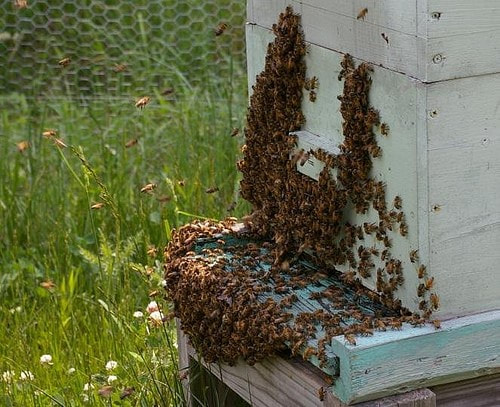
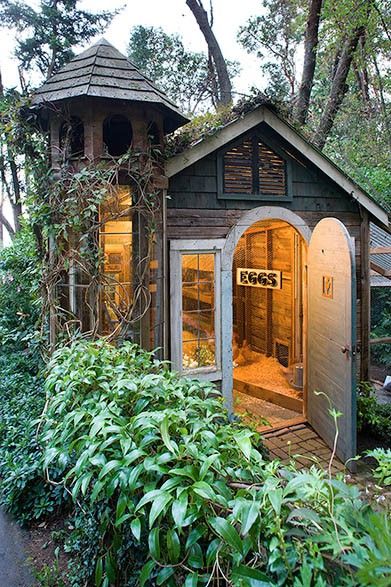
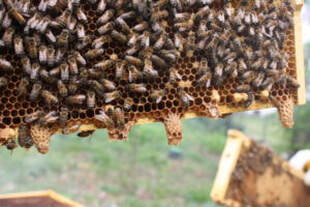
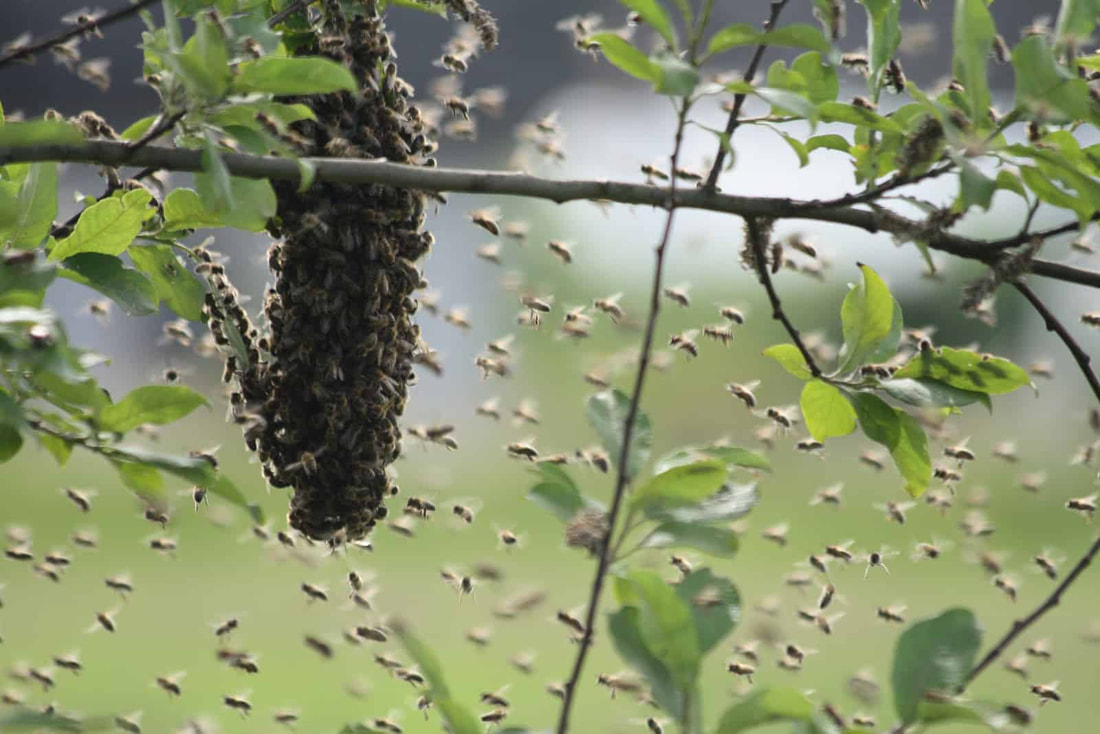
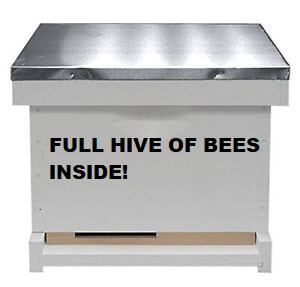

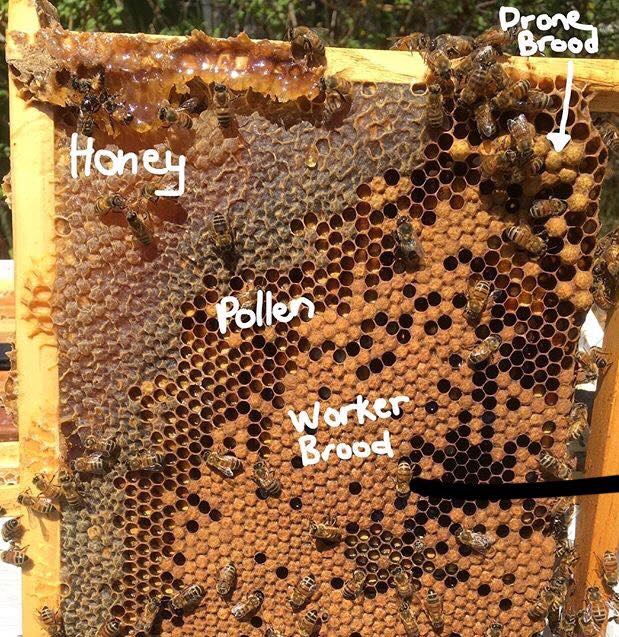
 RSS Feed
RSS Feed